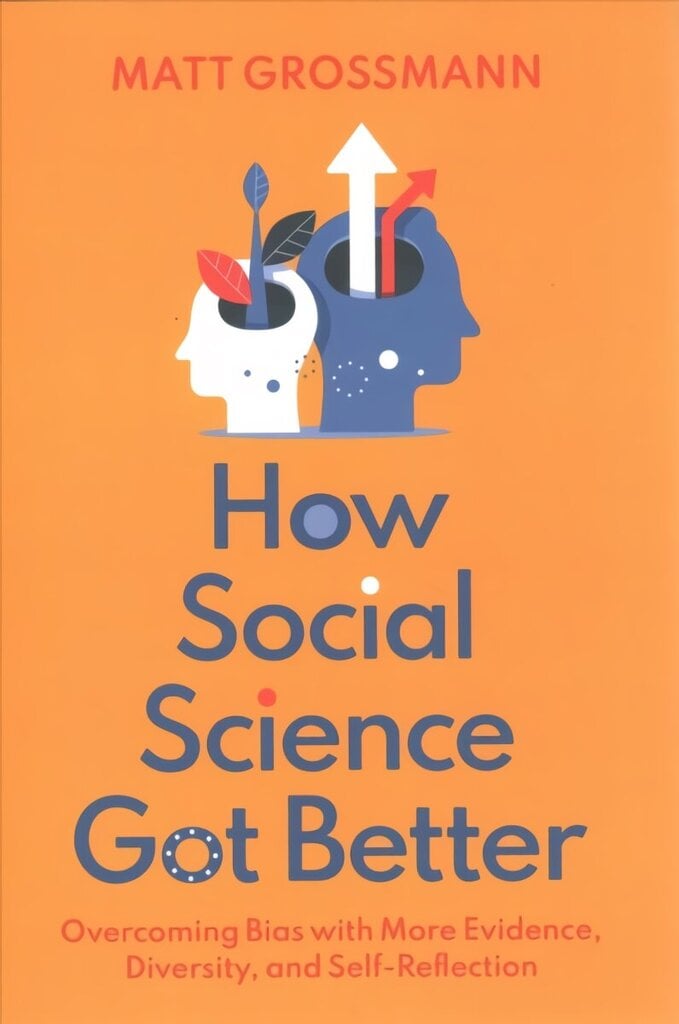
| Autor: | Matt Grossmann |
| Lehekülgede arv: | 352 |
| Ilmumisaasta: | 2021 |
| Kauba ID: | 15582389 |
"Social science research is facing mounting criticism, as canonical studies fail to replicate, questionable research practices abound, and researcher social and political biases come under fire. Far from crisis, however, social science is undergoing an unparalleled renaissance of ever-broader and deeper understanding and application-made possible by close attention to criticism of our biases and open public engagement. Wars between scientists and their humanist critics, methodological disputes over statistical practice and qualitative research, and disciplinary battles over grand theories of human nature have all quietly died down as new generations of scholars have integrated the insights of multiple sides. Rather than deny that researcher biases affectresults, scholars now closely analyze how our racial, gender, geographic, methodological, political, and ideological differences impact our research questions, how the incentives of academia influence our research practices, and how universal human desires to avoid uncomfortable truths and easily solve problems affect our conclusions. To be sure, misaligned incentive structures remain, but a messy, collective deliberation across the research community is boosting self-knowledge and improving practice. Ours is an unprecedented age of theoretical diversity, open and connected data, and public scholarship. How Social Science Got Better documents and explains recent transformations, crediting both internal and public critics for strengthening social science.Applying insights from the philosophy, history, and sociology of science and providing new data on trends in social science research and scholarly views, it demonstrates that social science has never been more relevant, rigorous, or self-reflective"--
It seems like most of what we read about the academic social sciences in the mainstream media is negative. The field is facing mounting criticism, as canonical studies fail to replicate, questionable research practices abound, and researcher social and political biases come under fire. In response to these criticisms, Matt Grossmann, in How Social Science Got Better, provides a robust defense of the current state of the social sciences. Applying insights from the philosophy, history, and sociology of science and providing new data on research trends and scholarly views, he arguesthat, far from crisis, social science is undergoing an unparalleled renaissance of ever-broader understanding and application. According to Grossmann, social science research today has never been more relevant, rigorous, or self-reflective because scholars have a much better idea of their blindspots and biases. He highlights how scholars now closely analyze the impact of racial, gender, geographic, methodological, political, and ideological differences on research questions; how the incentives of academia influence our research practices; and how universal human desires to avoiduncomfortable truths and easily solve problems affect our conclusions. Though misaligned incentive structures of course remain, a messy, collective deliberation across the research community has shifted us into an unprecedented age of theoretical diversity, open and connected data, and publicscholarship.Grossmann's wide-ranging account of current trends will necessarily force the academy's many critics to rethink their lazy critiques and instead acknowledge the path-breaking advances occurring in the social sciences today.
| Kauba ID: | 15582389 |
| Kategooria: | Ühiskonnateemalised raamatud |
| Tootepakendite arv: | 1 tk. |
| Paki suurus ja kaal (1): | 0,03 x 0,16 x 0,24 m, 0,65 kg |
| Kirjastus: | Oxford University Press Inc |
| Raamatu keel: | Inglise keel |
| Kaane tüüp: | Kõva |
| Vorming: | Traditsiooniline raamat |
| Tüüp: | Sotsiaalteaduste raamatud |
| Raamat väljavõttega: | Ei |
| Autor: | Matt Grossmann |
| Lehekülgede arv: | 352 |
| Ilmumisaasta: | 2021 |
Toodete pildid on illustratiivsed ja näitlikud. Tootekirjelduses sisalduvad videolingid on ainult informatiivsetel eesmärkidel, seega võib neis sisalduv teave erineda tootest endast. Värvid, märkused, parameetrid, mõõtmed, suurused, funktsioonid, ja / või originaaltoodete muud omadused võivad nende tegelikust väljanägemisest erineda, seega palun tutvuge tootekirjeldustes toodud tootespetsifikatsioonidega.